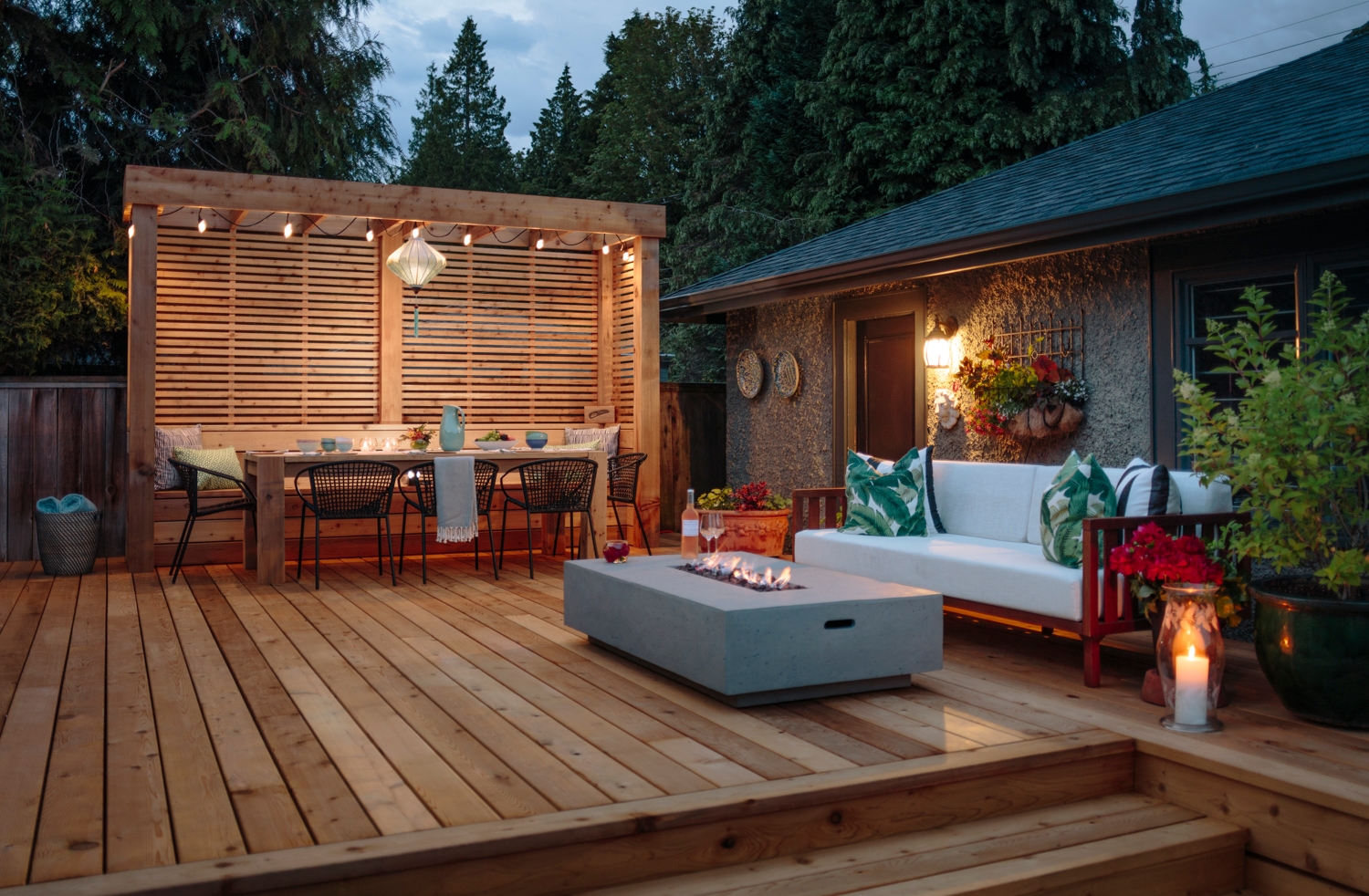Back
Back
Back
Back
Back
Back
Back
Back
Back
Back
USA & Canada
Cedar Decking vs. Hardwood Decking

Sign up now for our DIY Project Newsletter
Creating Inspired Outdoor Living Spaces Start with the Right Wood

One thing most homeowners and building professionals agree on is If you want a naturally beautiful deck, real wood is the only way to go. But what kind of wood should you choose? And how do you know which species is right for your home? You can choose a hardwood such as Ipe or a top-performing softwood like Western Red Cedar. Both species boast a rich tonal range and both species are naturally resistant to rot decay and insects, making them ideal for outdoor living projects. But that’s where the similarities end. Here, then, is what you need to know before comparing cedar decking vs. Ipe decking:
Cost Effective Decking
Cedar: How does cedar compare to hardwood? Well, with cedar, you’re getting great value for your money. A properly installed cedar deck will last decades and costs less than a hardwood deck. That’s because Western Red Cedar is readily available and easy to install. Transportation costs are less because the cedar is generally manufactured closer to home than hardwoods. Plus, cedar is lower density than hardwoods, so it makes for a lighter load. These are all savings that get passed on to you, the customer. The most economical choice you can opt for is a beautiful knotty grade of cedar such as Architect Knotty.
Hardwood: Hardwoods, in particular tropical hardwoods, can cost up to three times as much as softwood decking products. They are high-density woods that are harder to process.
Ease of Installation
Cedar: When it comes to cedar decking vs. Ipe decking, Real Cedar is a DIYer’s dream to install. As a durable, yet lightweight wood, it’s easy to carry around the worksite. It’s straight, stays true and is very easy on the tools. Also, Western Red Cedar is pitch and resin free, which means it accepts and holds a wide range of finishes beautifully.
Hardwood: Installing hardwoods like Ipe require greater carpentry skills. It’s also substantially more labor intensive than cedar because predrilling is necessary with each Ipe board. As well, builders need specialized tools and drill bits because Ipe is so dense, it can damage saws and drills. Furthermore, hardwoods such as Ipe don’t absorb stains well.
Decking Design Options
Cedar: Cedar is readily available in a wide range of sizes so you can customize your deck with interesting patterns, such as herringbone. Real Cedar also comes in variety of grades. The options are endless. For example, you can opt for a beautiful knotty grade of cedar, which will really add a lot of warmth and texture to your project. For a crisp clean look, there are clear grades to choose from as well. You can create a beautiful contrast too by using a mix of grades in your outdoor living space.
Hardwood: Ipe is not a readily available in nearly as many profiles or sizes.
Sustainably Managed Forests
Cedar: Cedar is sourced from the most sustainably managed forests in the world, ensuring protection of biodiversity, water quality and cultural heritage. For every Western Red Cedar tree harvested, three or more are replanted. There are more trees growing in North America today than there were 100 years ago. The primary source of Western Red Cedar is British Columbia, where 85% of timberland is certified as sustainable by third party, independent certification agencies. These monitoring systems track cedar products from trees in the forest through all the steps of processing and production. So, it’s a choice you can feel good about. For more detailed information about just how sustainable cedar is, Environmental Product Declarations (EPD) are available for the following Western Red Cedar decking: Typical Western Red Cedar Decking – Valid till 2023
Hardwood: Tropical hardwoods are sourced from a variety of locations in Central America, South America and Indonesia – to name a few. Forests in these areas may not be certified sustainable as sustainable. According to Greenpeace.org, “illegal logging of Ipe tree is causing irreversible damage to the Amazon.” Finally, the wood is being transported from a greater distance, so it leaves a bigger carbon footprint.
© 2025 All rights reserved
Gatsby Website Development by Jambaree